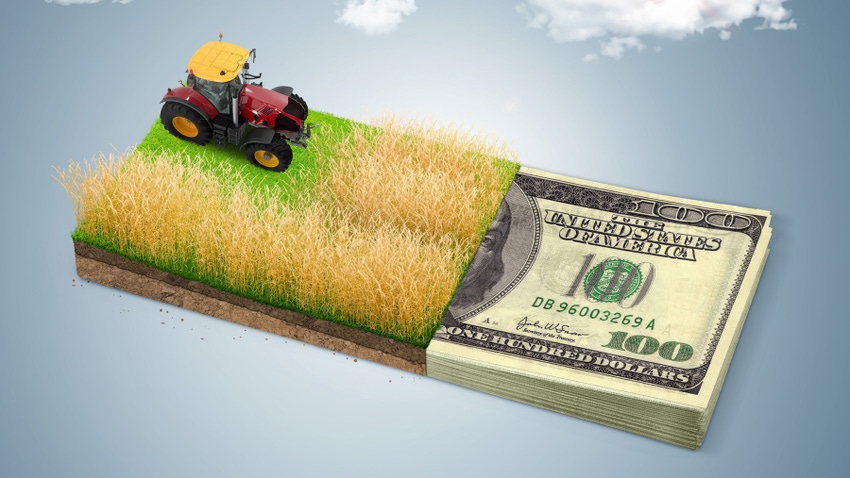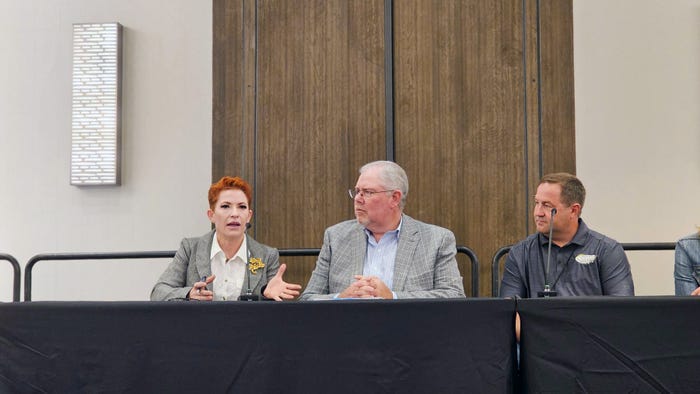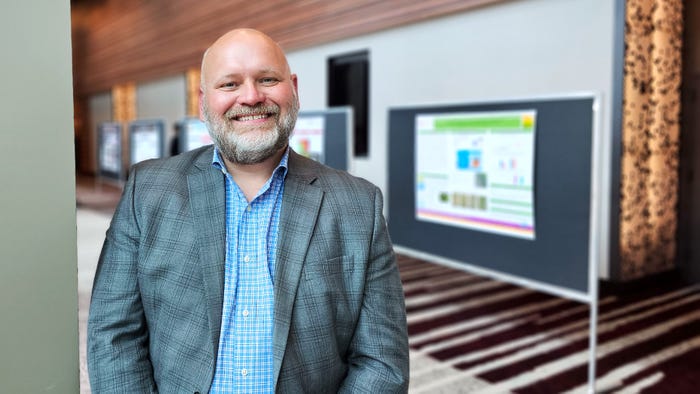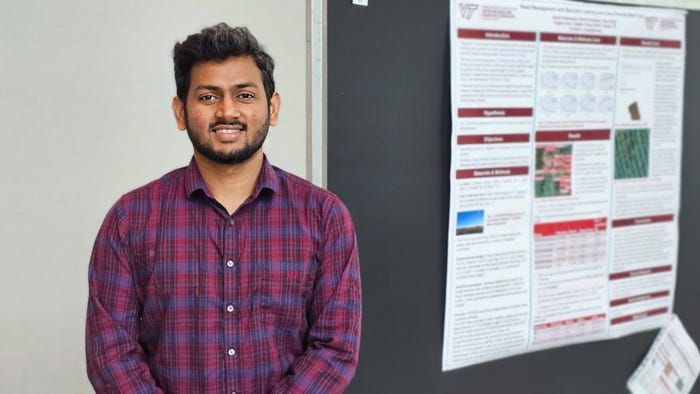
Artificial intelligence. It stirs excitement in some and fear in others. Organizers of the recent Artificial Intelligence in Agriculture Conference in College Station, Texas, hoped their event would help bridge the gap.
“We want to make sure we have more people using this technology and that they’re less afraid of it,” said Luis Tedeschi, who serves on the AI conference organizing board. “We want people to understand this is another tool in the toolbox, a potential tool, a very strong tool that can make a difference.”

AI in Agriculture Conference organizing board member Luis Tedeschi, Texas A&M professor and AgriLife Research Fellow in the Department of Animal Science (Photo by Shelley E. Huguley)
AI development and uses were shared at the conference in over 100 oral research presentations to 300 stakeholders including industry professionals, academia, and students. But not all who attended were from agriculture, nor AI.
The target was broader, according to Gary Thompson, executive director of the Southern Association of Agricultural Experiment Station Directors, an organization that helps oversee the multi-state university project called AI in Agriculture.
“They didn’t say, ‘We just want people working in AI and agriculture.’ No, they opened it up. We want people from engineering and computer science. We want to bring together the people who are doing cutting-edge AI work with the people who understand the application.”
Better use of data
Farm data is one area where AI could be valuable. Farmers collect terabytes of data from tractors and drones, for example, but how much is actually used?
“We’re good at generating data but how do you handle it? How do you deal with this?” Thompson asked. Using his index finger and thumb to show a small measurement, he replied, “The farmer is using this much for management decisions, and dumping the rest. Artificial intelligence will be used to analyze these massive data sets.”

Slaton, Texas, producer Lacey Vardeman talks about the need for better bandwidth to handle the data generated on her farm and ranch. (Photo by Shelley E. Huguley)
Data quality also is important said Tedeschi, a Texas A&M professor and AgriLife Research Fellow in the Department of Animal Science. “We have to make sure that the data we use to calibrate these models or to train these models (to represent) all different production scenarios. They have to be high quality data. Data that has been vetted and is valid.”
What’s on your AI wishlist?
Discussion panels included the role of AI-driven innovation and discovery in water stress systems and challenges and opportunities in the adaption of digital agriculture technology by producers.
Robert Strong, an associate professor with Texas A&M’s Department of Agricultural Leadership, Education and Communication, served on the growers’ panel as the technology transfer specialist, alongside five growers from Texas, Arkansas and (virtually) Tennessee.

Robert Strong, associate professor with Texas A&M’s Department of Agricultural Leadership, Education and Communication (Photo by Shelley E. Huguley)
The producers shared their “AI Wishlist” to give developers ideas of what would help them increase farm or ranch efficiency and, ultimately, their bottom line. They also discussed adoption resistors and barriers.
“I was excited because they shared everything we talk about in class,” Strong said. “When you can contextualize information in a classroom that’s real—this is really happening, here’s what it looks like—it not only increases a student’s knowledge, it enhances their ‘transformational learning’ by changing the way they perceive the world around them.”
With technology “increasing at an exponential rate,” Strong said it’s “more important than ever for researchers and university educators to be in lockstep with the growers they’re working to empower. Students must understand the on-the-ground realities farmers face so they can develop technology that’s practical and impactful.”
What AI could do for farmers
The AI conference showcased ongoing academic research undertaken by students and faculty from across the nation. Below are descriptions of a few of those presentations:
Thanos Gentimis, an assistant professor at Louisiana State University's experimental statistics department, presented research on improving the accuracy of yield prediction with machine learning that considers the effect of field boundaries. This research would solve for inaccuracies from machines turning at end rows. Gentimis’ statistical model takes this ‘boundary affect’ into account so that producers can more accurately predict yield.
Vinay Vijayakumar, a Ph.D. research assistant in the University of Florida's precision agriculture lab, presented on the development of a smart robot precision sprayer for specialty crops. “We’re trying to capture the spray here on brown paper,” he said, clicking through a slideshow that describes a test undertaken better to understand the impact of wind on spray patterns. “There’s a camera here, and the fan produced at the highest setting a wind velocity of 8 miles per hour.” Vijayakumar and his team are currently on their third prototype and still have a long way to go before their research is viable for in-field application.

Vinay Vijayakumar, a Ph.D. research assistant in the University of Florida's precision agriculture lab (Photo by Shelley E. Huguley)
Heather Manching, a North Carolina State University postdoctoral scholar, presented her work on an AI-enabled tool that can automatically count citrus fruit from photographs. This lets growers quickly identify plants that produce the most so they can optimize breeding. Manually counting fruit takes up to an estimated 77 human hours. “We can reduce the number of hours and get the same output you would with a manual count down to 1.25-to-4-man hours.” Manching’s team is trying to find the best way to deploy the AI in the field, focusing on integrating it via ‘edge computing,’ which computes complex equations in low-powered devices.
Read more about:
TechnologyAbout the Author(s)
You May Also Like








